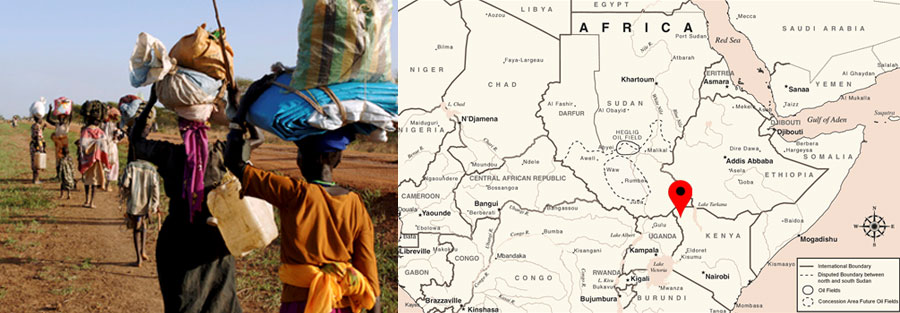
The humanitarian emergency
Nearly 2.3 million South Sudanese have fled to neighboring countries and 1.87 million remain internally displaced in South Sudan due to violent conflict throughout the country. It is the largest refugee crisis in Africa and the third largest refugee crisis in the world.
South Sudan was established as a new country in 2011 after a deadly civil war. Unfortunately, only two years later, in 2013, conflict broke out in the new country, leading to a complex and dangerous situation of armed conflict, economic decline, disease and hunger. This conflict has forced millions to flee and left millions more displaced inside the country.
The vast majority (over 80 percent) of those fleeing South Sudan are women and children, with children making up 63 percent of the total South Sudanese refugee population. They are survivors of violent attacks, sexual assault and, in many cases, children have been separated from their parents and are traveling alone.
The majority of South Sudanese refugees are living in neighboring countries such as Sudan, Uganda, Ethiopia, Kenya and the Democratic Republic of the Congo. Kenya’s Kakuma refugee camp and its expansion site, Kalobeyei settlement, host more than 106,000 South Sudanese refugees, one of the largest South Sudanese refugee populations in the world. UNHCR is embracing innovation to give refugees living in Kakuma opportunities for success. For example, Kakuma hosted the world’s first TED Talk in a refugee camp and a refugee-led hackathon.